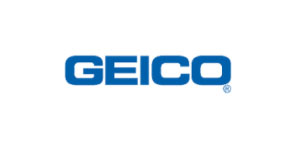Indiana is known for its natural wetlands and river systems, making flooding a regular occurrence here. If your Indianapolis home has experienced water damage due to flooding, take immediate steps to mitigate further damages as soon as possible in order to prevent irreparable harm and health risks from taking place.
Water damage repair professionals possess various tools to dry and restore your belongings in the event of water damage to your home, as well as expertise to detect and classify it accordingly.
Clean Water Damage in Indianapolis
Water damage, whether caused by a burst pipe, flooding in your basement or broken dishwasher is always an emergency situation that requires immediate action in order to prevent structural damage, mold growth and health problems. You must act fast in order to minimize structural damages as soon as possible before they lead to structural decay, mold growth or health complications.
How much it will cost to repair water damage depends on factors like its type and extent, plus any necessary additional repairs or restoration work that might be required. Clean-up costs also depend on factors like drying times for affected areas as well as replacement material needs.
Rainwater damage is generally the cheapest to repair, costing anywhere from $3 to $4 per square foot for cleanup and drying services.
Homeowners must regularly inspect and service their plumbing system in order to protect it from becoming an expensive source of leaks or flood damage. Hiring IICRC-certified professionals for maintenance inspections and repairs may help mitigate this potential threat as well.
While water damage restoration companies may charge different restoration fees for different categories of water, their labor cost per hour typically ranges from between $70 and $200 an hour for cleaning, evacuation and repair work.
At all costs, homeowners should bear in mind that clean water can quickly turn gray or black due to damage from rain, making a swift response crucial in mitigating its severity and reducing overall costs of restoration.

Gray Water Damage
If you find yourself dealing with gray water damage, it’s essential that it be taken seriously. Contaminated with bacteria and microorganisms that could potentially cause discomfort or sickness when in contact with humans and pets alike, gray water damage can wreak havoc on carpeting, hardwood floors, walls, ceilings as it saturates most materials it comes into contact with making drying difficult or necessitating replacement of materials that become saturated with moisture.
Gray water damage, left untreated, can quickly escalate into more serious and hazardous types of flooding known as black water flooding, due to contaminants like sewage being present in it. Black water pollution poses serious threats to health and should only be handled by professionals trained in handling it properly.
Expert water damage assessors assess water damage by identifying its source and level of contamination, then categorizing the water according to clean or dirty – clean, gray and black waters being the categories they fall under. With this information on hand, your insurance provider can calculate a fair payout amount.
Clean water damage restoration costs tend to be much cheaper than gray or black water damage restoration due to different cleanup procedures for each type of damage, for instance addressing a burst pipe quickly will be much cheaper than dealing with an ongoing leak that’s caused toxic mold growth throughout your home. Also consider that drying times play a factor here – different materials respond more readily than others so working with clean water makes restoration quicker and simpler than when dealing with gray or black water damages.
The cost of water damage can vary depending on a number of factors, including:
- The severity of the damage: The more severe the damage, the more expensive it will be to repair.
- The size of the affected area: The larger the affected area, the more expensive it will be to repair.
- The cost of repairs: The cost of repairs will vary depending on the type of damage and the materials that need to be replaced.
If you have experienced water damage in your home, it is important to contact a professional restoration company as soon as possible to assess the damage and begin the repair process. The sooner you take action, the less likely it is that the damage will become worse and the more likely it is that you will be able to recover the full value of your insurance claim.
Black Water Damage in Indiana
Storms, flooding rivers and natural wetlands can all cause water damage in a home or business, but damage from burst pipes or sewage backup may also contribute to it. When water damage does strike it’s vital that immediate action are taken immediately or the situation will only exacerbate further.
As moisture in your property increases, mold and mildew growth may follow suit, becoming expensive to remedy and potentially health hazards. Water and sewer lines can damage furniture, carpets, drywall and other porous materials which make hiring professional services immediately so essential.
Water damage repair costs vary significantly depending on the type of water entering and its severity; minor leakage usually costs less to restore than an entire basement being submerged in moisture. Water restoration professionals can assess damage and develop an action plan for its restoration.
Clean water (class 1) is often the least costly to repair as its cleaning requires only basic skills and knowledge of plumbing. But class 2 water requires more attention as it may contain bacteria, viruses and other contaminants resulting from toilet overflow or groundwater flooding – and it should never be touched directly!
Black water remediation, or class 3, is one of the most complex and expensive tasks available to us. Common sources for black water include sewer backups or natural flooding that has brought with it human waste as well as chemicals, pathogens and other potentially dangerous materials such as human feces or urine, pathogens and harmful substances that should only be handled by trained professionals. Even after water and sewage removal has taken place, drying techniques such as dehumidifiers and air movers must be utilized before any item that came in contact with it must be sanitized prior to reuse by anything it touched by black water must also undergo sterilization process – any device touched will needing sanitation procedures as needed.
Class 3 Damage in Indianapolis, Indiana
Water damage needs to be dealt with as soon as it appears; waiting could result in costly repairs and even rebuilding of parts of your home. Contact IICRC certified professionals in Indianapolis who can respond rapidly and mitigate water damage quickly while working directly with your insurance provider to return you back to normal as quickly as possible.
Water damage is classified into three levels of severity, and costs increase as each level progresses. Simple puddling in front of toilets or sinks may be remedied with home supplies; more extensive damage requires professional services to clean, dry and protect the area against fungus and bacteria growth.
Categorically 2 water damage occurs when spilled water poses health risks to humans. This includes contamination from appliances like dishwashers and washing machines, overflowing toilets with urine only waste, sump pump failures, as well as chilled or condensate water from fire sprinklers or HVAC systems.
Class 3 damage, often known as black water damage, is the most extreme form of floodwater loss and contamination. This category of water can include sewage, rising flood waters, seawater and river water that has become polluted. When this level of flooding occurs, walls, ceilings, carpeting cushions and subfloors become saturated resulting in floodwater loss that cannot be salvaged and can even become irreparable.
As soon as possible, these areas should be professionally cleaned, ventilated, dried and disinfected in order to minimize bacteria, mold and mildew growth that could create further damage and health risks for you or your employees. Specialized equipment may be required in order to eliminate all moisture sources; dehumidification techniques may also be employed if needed.
Class 4 Damage
On Sunday afternoon and evening, severe thunderstorms that rolled through central Indiana brought strong winds, heavy rainfall, and even tornadoes in some locations. On Monday, National Weather Service will deploy teams across multiple counties in Indiana to assess damage from these severe storms.
One major factor determining the cost of fixing water damage in a home is what type of damage has occurred; for instance, fixing minor bathroom leaks costs much less than dealing with an entire basement that’s been submerged under water.
Clean water damage restoration can be the least expensive way to address water damage issues, yet can still cost homeowners up to $150 a room for cleanup and restoration costs. If a stain appears on carpeting it would be wise to investigate if there’s a leak somewhere nearby that needs fixing as this might indicate water issues in that part of the home.
Professional water damage restorers often utilize moisture meters to assess how much moisture there is in walls, floors or carpeting. Excess moisture in walls, floors or carpet can pose structural issues and increase restoration costs significantly.
Class 1 water damage restoration is generally the easiest and most budget-friendly to address, since its damage is limited to one area of a room. Such flooding often stems from leaky faucets or burst supply pipes that have caused limited flooding damage.
Class 4 water damage results from long-standing flood or hurricane waters and is the hardest to restore, potentially wreaking havoc with ceilings, walls, subflooring and insulation in a home. Repair costs average between $20,000 to $100,000 to remove all affected materials before replacing them with new ones.
















